👋 I would like to first welcome the 300 new subscribers that just joined since last week. I sure had a ton of fun writing about OnlyFans. This week is about my favorite CPG startup SnackMagic, a personalized snack box gifting platform, and the story of my favorite founder, Shaunak Amin.
This is a story of beating all odds.
“Dad, how long does it take to build a big big business?” - Shaunak at 7 years old
“It takes generations, son.” - Shaunak’s Dad
This answer didn’t sit well with Shaunak, who would begin experimenting with entrepreneurship during his high school years in India.
With no real skills or experiences, Shaunak landed on the idea of a graphology (handwriting analysis) seminar business. At the time, it was a smart idea because people didn’t use computers much, but had to write a lot. He first taught himself graphology, and soon began hosting paid seminars to teach other people how to analyze someone’s personality from the way they write by going through different case studies like Bill Clinton. With the help of some newspaper ads, his seminars became an instant hit.
“I think 350 people attended my first seminar - the hall was full. I also started a graphology consulting business in the town, ” Shaunak laughed.
It’s not always sunny in Philadelphia...
To fulfill his ambition of building a very big business, Shaunak decided to go to college in the U.S., at the University of Pennsylvania. Not long after matriculating to Penn, he began his next business venture - a quick and casual Indian food truck.
Two insights led to this idea - 1. Indian food was gaining popularity in the US, but access was limited to nice restaurants 2. Food trucks were really popular at Penn.
Similar to his graphology seminar business, Shaunak’s food truck business took off right away. Penn students couldn’t get enough of his delicious and affordable Indian food. The business started right outside Wharton Business School, on 38th and Spruce, expanded to four carts located in different areas of the Penn campus, and even scaled to other universities.
Once the opportunity presented itself, Shaunak pivoted the business to a wholesale model and created a food brand called Tikka, supplying directly to grocery stores and cafes in Philly, all in an effort to make his business even more scalable.
Nevertheless, he would soon face insurmountable challenges (a theme that would resurface for his next business).
The first challenge was his student visa, which prevented him from going full-time on the business. He had to maintain his full-time student status to stay in the US. Obviously, like a diligent student, he decided to only show up for exams so he could pass the classes 😂.
The second challenge was way more daunting, and would soon teach him his first important entrepreneurship lesson - Cash is King.
Tikka’s products were in such high demand that they literally flew off the store shelves in days - they went from 0 stores to 45 stores in less than two months. It may sound like a good problem to have, but it actually presented an existential crisis - Shaunak needed to keep restocking, but grocery stores were slow at paying. Some stores took as long as six months.
To pay his employees and for produce, Shaunak invested all his tuition money into the business (without his parent’s knowledge). Furthermore, he used his rent money to cover business expenses and lived either in his car or in a subway station near Penn.
“I lived in my car for five months right outside Penn’s gymnasium. Every morning, I would get up, go to the gym to take a shower, but not to work out. I would often sleep in the subway station at 30th Street Station, but I had to keep changing locations because I kept getting kicked out.”
The last straw came after Shaunak failed to secure a loan due to his immigration status. He was forced to sell the business but fortunately was able to get his money back.
Hedge fund world and the restaurant biz…
Having just gone through the cash crisis, Shaunak wanted to get into finance, 1) so he could meet people who had a lot of money, and 2) learn more about business. Even though he did not have a perfect GPA, he was smart enough to get multiple offers from hedge funds - after all, not many college students ran successful businesses while keeping their grades afloat.
He would spend just under a decade in finance, mostly specializing in fund of funds, investing in other ultra-wealthy and intelligent hedge fund managers 💸.
But it was only a matter of time before a true hustler like Shaunak got back in the game. That opportunity came in the form of Stadium.
Stadium was an NYC-based, group lunch delivery service for corporate offices that took a dish-centric approach (as opposed to restaurant-centric) to corporate lunch delivery. Shaunak’s insight was that people wanted to order the best dishes with their colleagues in the office, but not necessarily from the same restaurants.
It was a logistical nightmare - dishes from different restaurants had to be pooled and redistributed in an optimal way for on-time delivery while maintaining the temperature of both cold and hot food (hint - this logistical IP would turn out to be a huge asset for SnackMagic later).
It was a slow grind, taking Shaunak and his team almost 5 years to gain meaningful traction. Growth started to pick up in 2019, and by February 2020, the team was having its best month, doing more than $50K in sales, every day.
Well… we all know what happened the month after 🦠… RIP.
The birth of SnackMagic
Shaunak likes to always have a plan B in his back pocket. At the beginning of 2020, he and the Stadium team had already discussed different options in case of an NYC shutdown. However, let’s be frank, no matter how much you are built different, seeing the business you spent six years on going to zero is not a pleasant feeling 😢.
After some quick internal discussions and a ton of calls with their biggest corporate customers, the team decided to pivot to a personalized snack box delivery service. The decision was made based on the following four signals:
Snack add-ons started to get a lot of traction just before COVID
Many of Stadium’s snack brand patterns had a ton of inventory sitting around
They already had the logistical IP to build snack boxes personalizable to each recipient
Corporate customers wanted to connect with their employees during remote work
3-week MVP
“People were skipping sleep to make sure the launch was good to go.”
This quote above perfectly captures the mindset of everyone on the team at the time. They had no time to waste. Many tasks had to be done simultaneously from packaging to building a website.
The initial MVP was simple - gifters could go on the website and set the budget per recipient, who would receive a link to build their own snack box. It didn’t have all the dynamic customization features it has today, but it was differentiated enough to test out the concept.
First 100 customers
The first orders came from the old Stadium website, and the team started shipping boxes the third week of April. In addition, everyone on the team began telling their friends and families about this new snack box product. April ended with close to $20K in revenue.
First 500 customers
To capitalize on the viral nature of the product, the team decided to send free boxes to targeted personas, including startup founders and event organizers. This tactic worked out quite well - with just $35 in CAC, they could often get people to place orders worth thousands of dollars, and sometimes, even tens of thousands.
Other growth tactics
Even today, product-led growth contributes to an overwhelming percentage of the revenue. Nevertheless, several other growth tactics contributed to the top line:
SEO
Getting attention from the press
Virtual trade shows
Performance marketing (e.g. Google Adwords)
International expansion
One of the biggest strengths of SnackMagic is the agility to adapt to needs based on customer feedback. In the early days, many enterprise customers were asking if the team could deliver to their employees in different parts of the world. For many US-based companies, only US-based employees were getting different perks while international employees were left out due to logistical and financial reasons.
Shaunak and the SnackMagic team decided to take on this massive challenge. The major problem was fulfilling orders in smaller countries like Oman. It was infeasible to ship directly from the US warehouse due to cost, so the team had to think outside the box. They found their secret sauce in an ambassador program - finding local people to fulfill orders. It turned out to be a genius idea because not only could they do it faster, but they also understood local taste preferences and many cultural nuances.
Current traction - SnackMagic grew from 0 to $20M in annualized revenue in just 8 months in 2020 and has since grown by double-digits month over month.
Conquering CPG and gifting
SnackMagic today looks very different from the initial snack box product. It is now both a vertical CPG marketplace with snacks, beverages, swags, and merchandise, and a horizontal gifting platform with use cases including both direct-to-consumer (D2C) and B2B.
Even though there are many use cases related to D2C, such as treating families and friends, the majority of orders still come from corporations, specifically the enterprise segment.
The snack box industry has attracted many entrants in recent years, but I believe that SnackMagic has acquired significant assets that will springboard the company to unicorn status in the next 3 years.
I will break down SnackMagic’s key differentiators by its stakeholders - customers and brand partners.
Customers
SnackMagic’s customers include both the people or companies that gift the snack box and the people on the receiving end.
Gift givers:
1.Ease of use - The user flow is so easy that most orders, even many $10k+ ones have been placed directly on the website without any help from the team. SnackMagic makes corporate gifting 10X easier.
2.International presence - The ability to fulfill snack box orders anywhere in the world attracts many global enterprise customers.
3.Analytics - Gifters gain more control by being able to track treats redemption dashboard and total spending, along with other data.
Recipients:
1.Personalization - SnackMagic still stands as the only snack box company that provides consumers the ability to choose and pick each snack. Each box is 100% customizable by the recipient.
2.Fun - all the snacks come from more novel and niche snack suppliers, helping consumers to discover new snack brands.
Brand partners
SnackMagic buys in bulk from many brand partners. Due to the sheer volume on the platform, SnackMagic offers an additional distribution platform for brands that have been suffering since the start of the pandemic.
However, the biggest asset lies in the amount of data available on the platform. Brands can access that data through SnackMagic, and thus gain a deeper understanding of the performance of and the reviews on the snacks.
Pepsi of the bits world
Atoms vs bits is a concept proposed by Peter Thiel in his book Zero to One. Atoms represent the physical world while bits represent the digital world.
Traditional CPG behemoths like Pepsi dominate the atoms world because they control all the shelf space from cafes to supermarkets. However, this dominance over physical distribution does not translate into the bits world due to the unlimited digital shelve space. Conquering the bits world requires different types of assets, ones that involve data, digital distribution, and many others in between.
Comparing SnackMagic to Pepsi is certainly a poor analogy today, but SnackMagic might one day reach that Pepsi status in the digital world. In the base case, I believe (very biased lol) that SnackMagic will reach that $1B dollar valuation in the next three years assuming a 2-3x revenue growth year-over-year and a 3-5x multiple.
Nevertheless, this journey to 🦄 status will not be easy. Zero to 20M is one problem while scaling 20M to $200M involves another set of issues. The first challenge is prioritization. There are new opportunities that come up every day, but it is so important to focus on the key levers and not get carried away. The second challenge is culture. The second part of the journey will require creating more processes and structures in the business. Figuring out ways to maintain a strong culture and retain the right talent will be paramount.
Check out SnackMagic, and make sure to sign up for the snack drop!
See you next Sunday 😉!



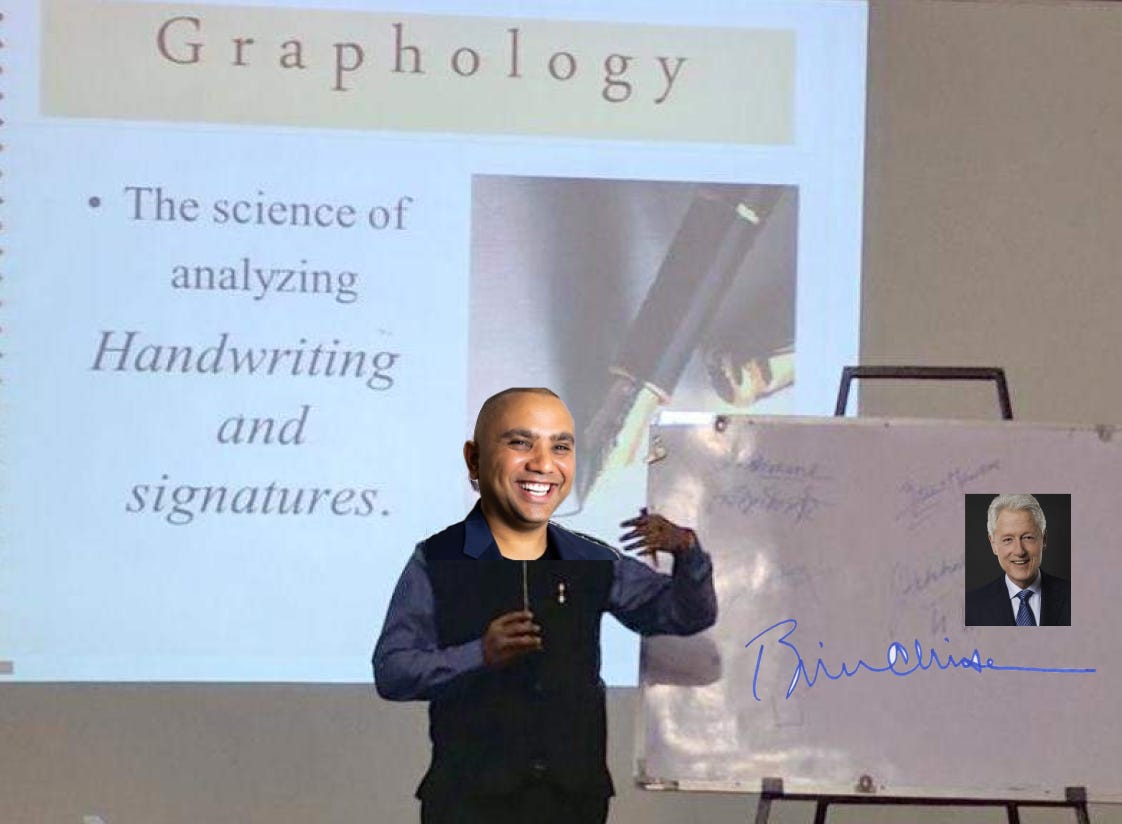
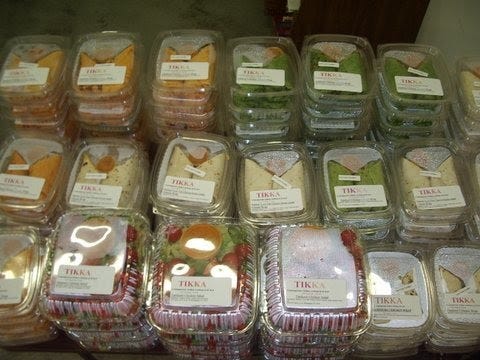

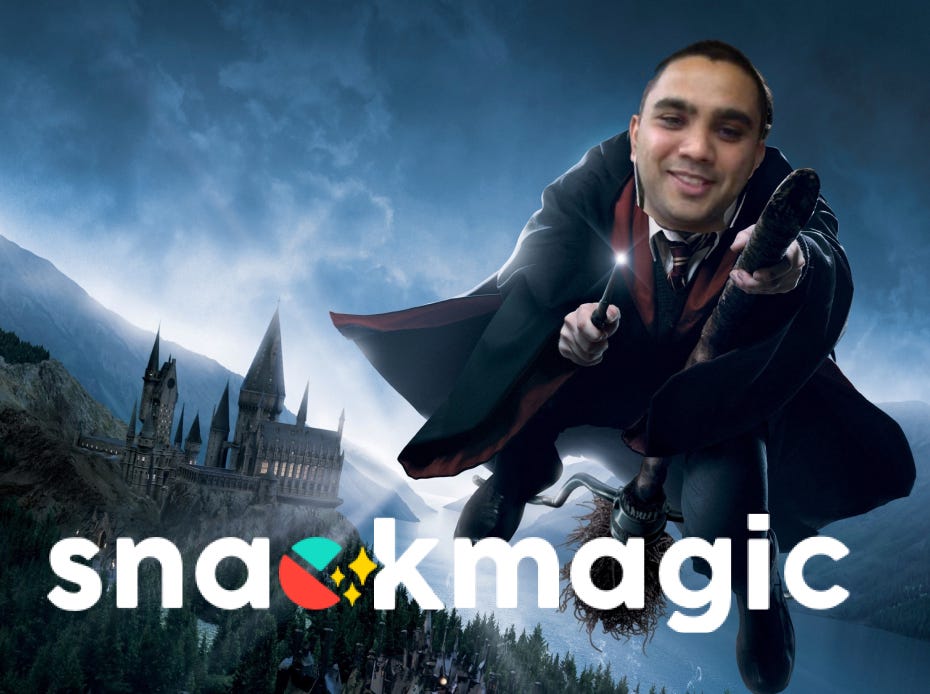
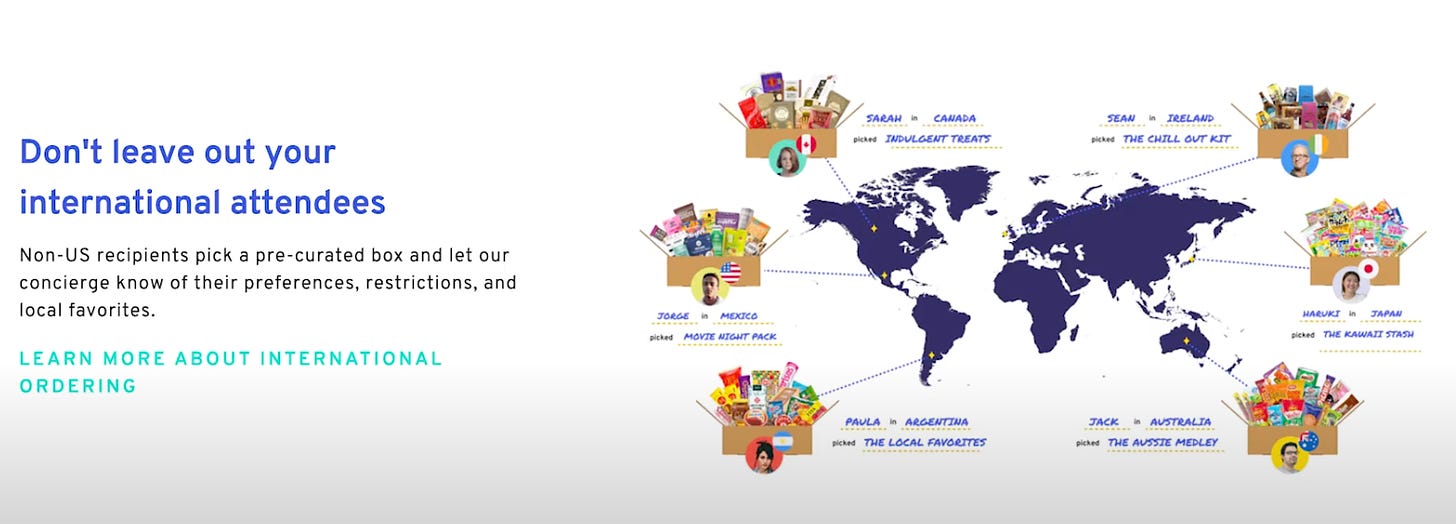
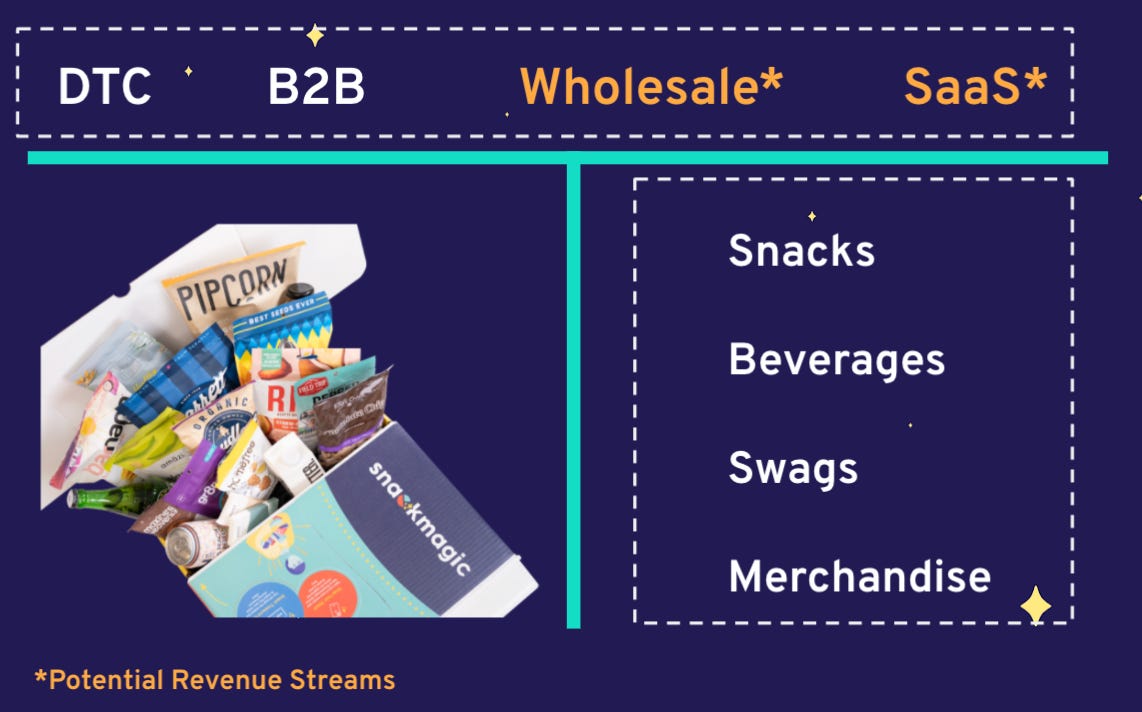
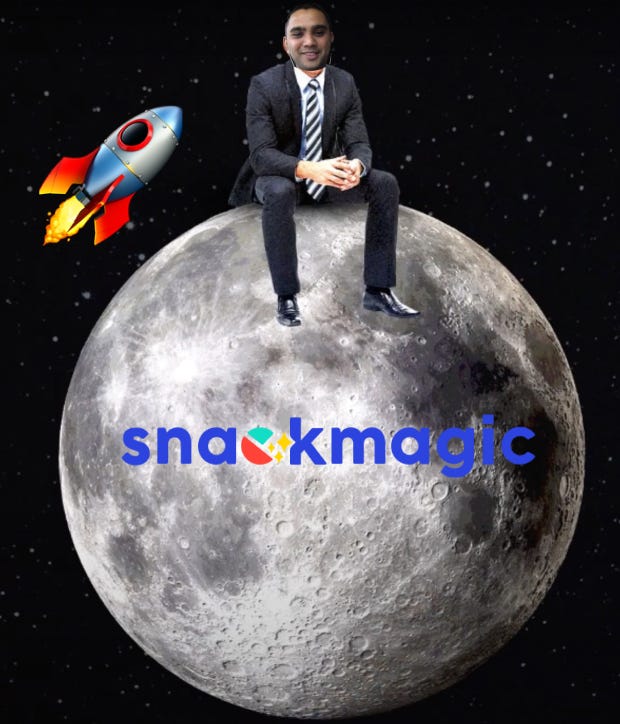
This newsletter is really great. Keep it up
This newsletter is really great. Keep it up